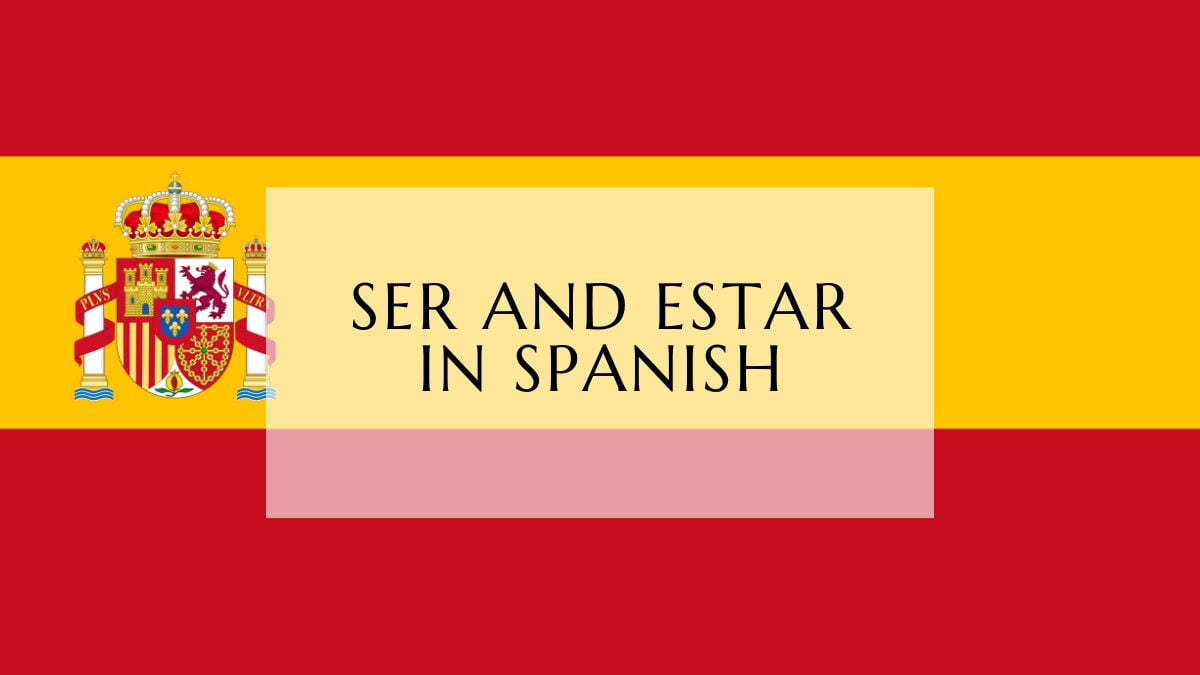In this lesson, we will talk about Ser and Estar in Spanish, their conjugations and when to use each one of them. And some examples to clear any confusion.

In Spanish, we have two verbs to express the English verb “to be”: Ser and Estar, each one has its own usage, before explaining each one, let’s get their present conjugation right first:
| Pronoun | Ser | Estar |
| Yo | soy | estoy |
| Tú | eres | estás |
| Él/ ella | es | está |
| Usted | es | está |
| Nosotros / Nosotras | somos | estamos |
| Vosotros / Vosotras | sois | estáis |
| Ellos / Ellas | son | están |
| Ustedes | son | están |
When to use “ser” and “estar” In Spanish
In general, the verb “Ser” is used for permanent (or long lasting) situations, while the verb “Estar” is used for more temporary situations (like conditions, locations, emotions).
When To Use Ser
- To indicate the place of origin
- To introduce ourselves.
- To talk about a physical characteristic
- To tell the nationality.
- To tell the profession. (yes it can change)
- To tell the time, hour and date
Note: you can practice what you’ve learned here, and learn how to pronounce each of the words in our Memrise course here, don’t know how to use the platform or sign up? we’ve got you covered in this easy-to-follow tutorial here.
When To Use Estar
- Greeting
- Placement of something.
- Talk about a temporary situation.
- Talk about the weather
- Talk about emotion
- To describe geographical localization
There are some situations where the meaning changes depending on the verb used:
Estoy listo (I’m ready) – Soy listo (I’m clever)
Soy de Marruecos (I’m from Morocco) – Estoy en Marruecos (I’m in Morocco)
Your origin is a permanent situation, but being in a place is temporary.
Carlos está serio (it’s a current mood that will change)
Carlos es serio (we are describing a characteristic of his personality)
What about beauty, is it permanent or it is because of the clothes or makeup for example:
Ella es guapa (describing her appearance: she is pretty)
Ella está guapa con ese vestido (at this specific moment : she is looking pretty in that dress)
Happy learning!